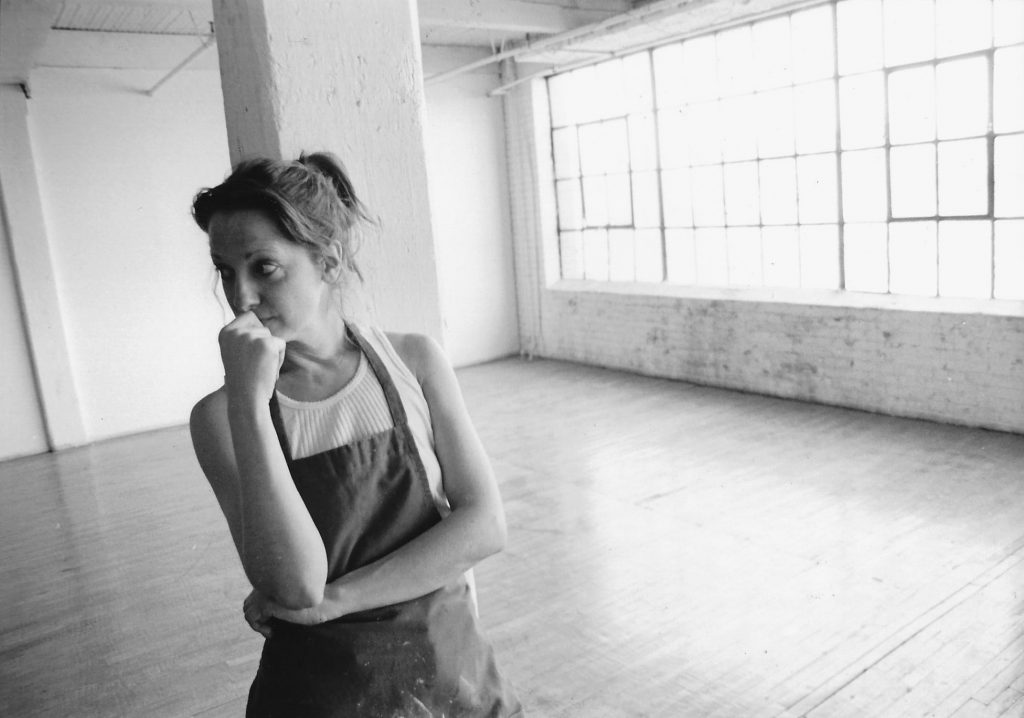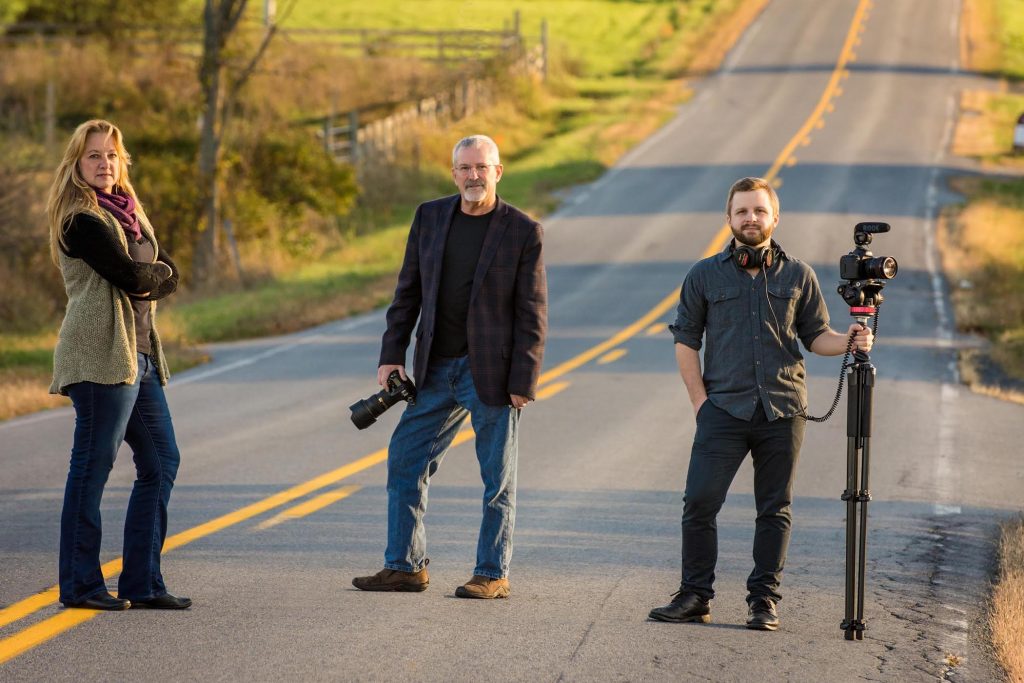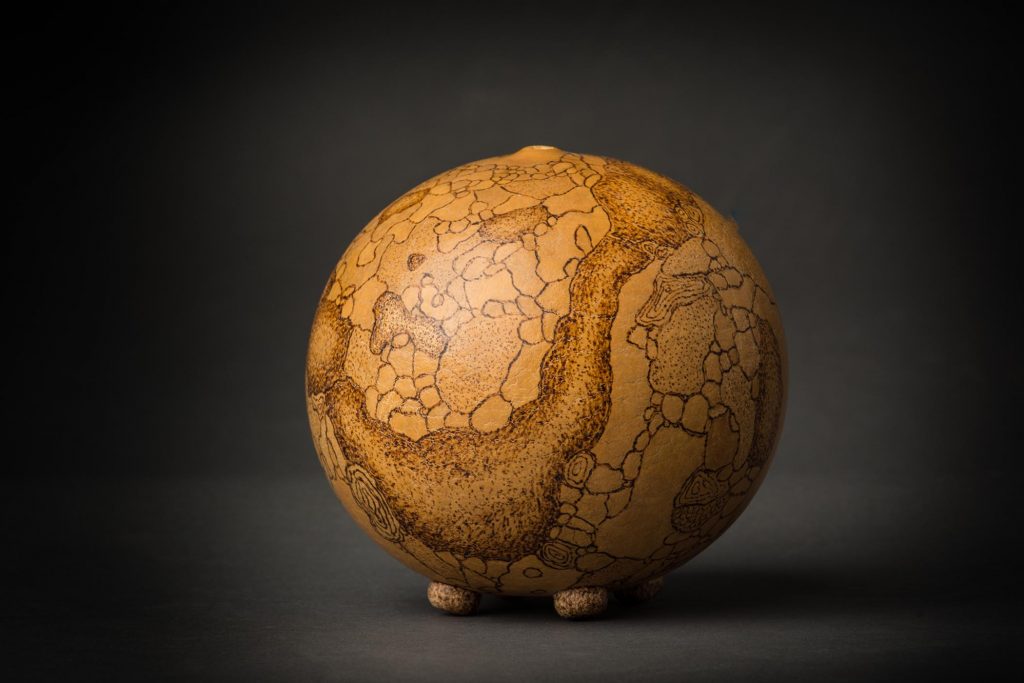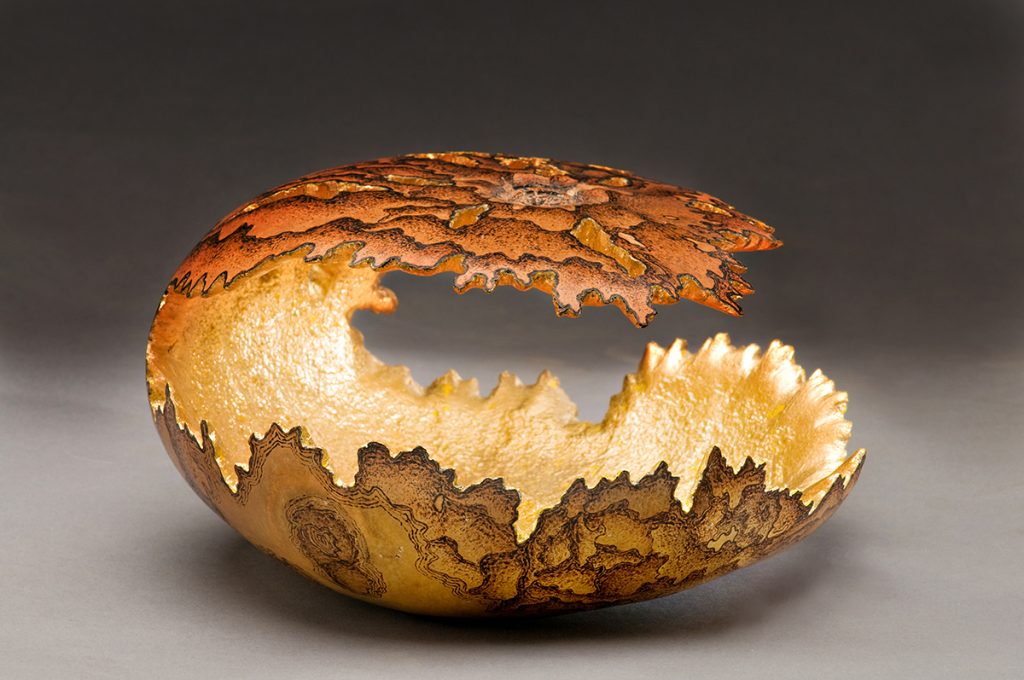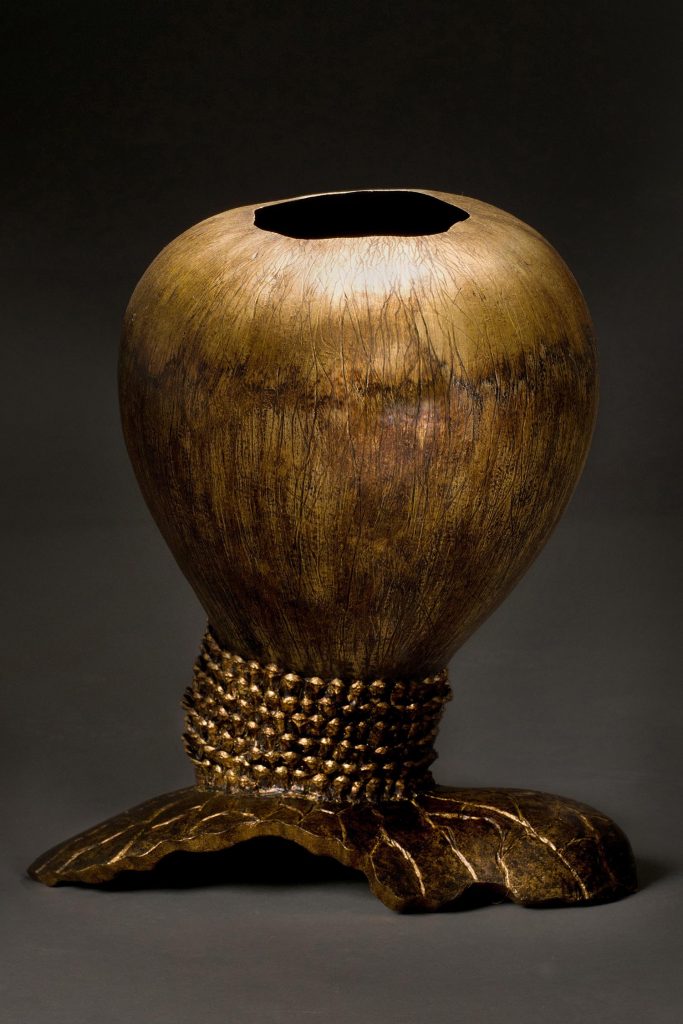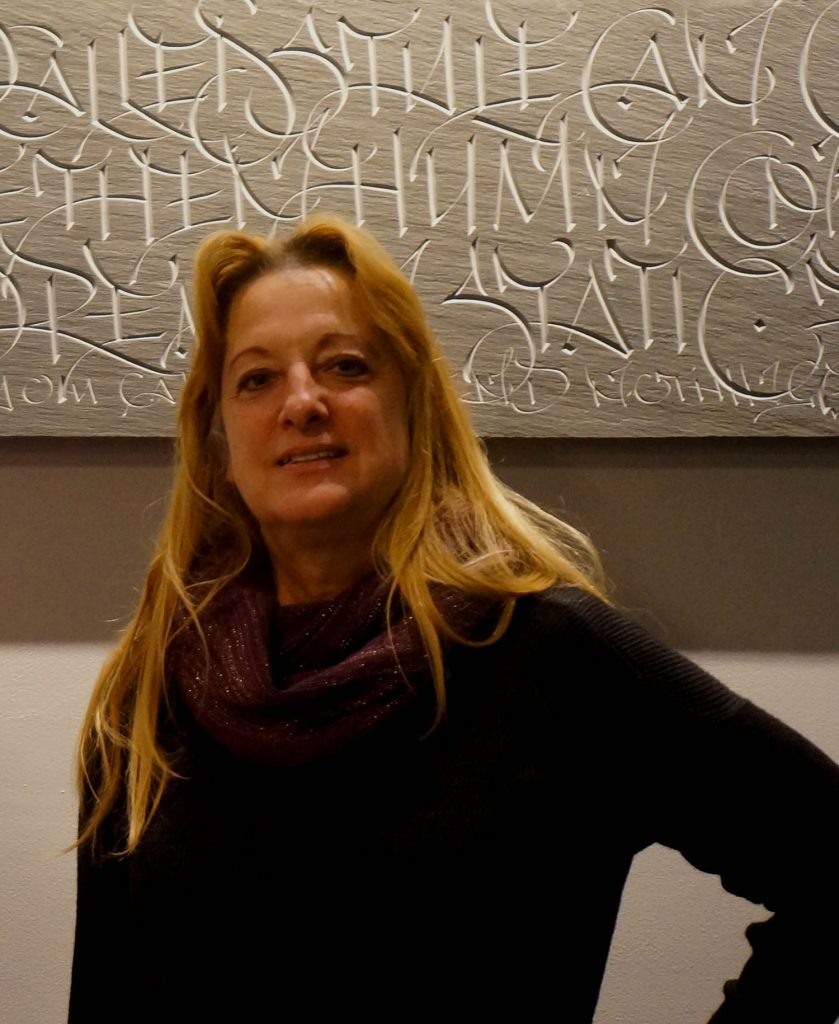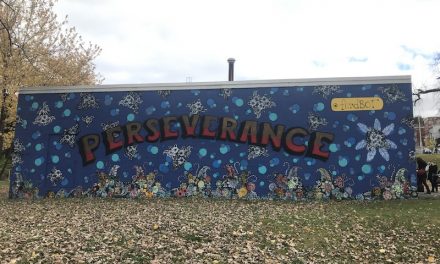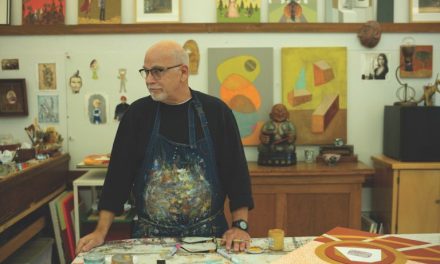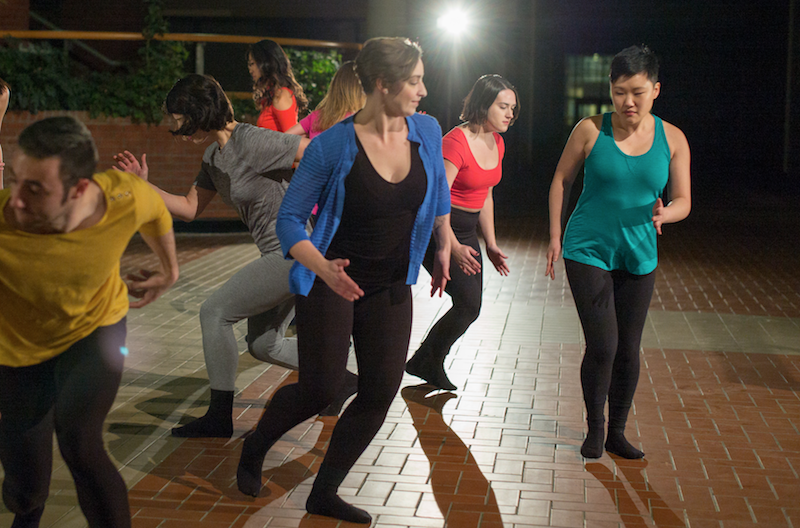Gourd sculptor, writer, filmmaker, curator
Current hometown: Whitehall
Age: 63
Current project: Continuing work on her “Artful Vagabond” film series, and developing an installation project with her gourd work
Collaborative Media’s Maker of the Week is made possible by KeyBank.
Quitting her travel industry day job one day allowed Serena Kovalosky to follow her artistic muse into making fine art gourd sculptures, writing about the arts and starting a film series exploring the lives of visual artists. Nearly 25 years later, she continues to see herself as a “tour guide,” inspiring what she calls “artful living” in the lives of those around her. She cut her artistic teeth in Montreal’s Saint-Henri neighborhood, an area she calls a “Canadian SoHo,” before its gentrification prompted a return to her native Washington County in 2005. There, she has used the arts to drive tourism and boost the rural creative economy; her work has included curating a groundbreaking exhibit at the Slate Valley Museum in Granville and co-founding the juried biennial Open Studios of Washington County showcase.
I didn’t realize until I was looking through your Artful Vagabond website that you’ve done interviews like this one, with other artists.
It started off as sort of an “artful travel blog” because I worked in the travel industry for 18 years. I wanted to bring, as an artist, the artful way that I do things to travel… travel is a very artful thing to do. You have to let go of all your preconceptions. It’s the same way with art: You have to let go. Blank slate, blank canvas.
Probably not everyone sees it that way. My grandmother traveled a lot. But she always stayed in American-style hotels, did bus tours; she really sort of insulated herself.
When I was in the travel industry, I dealt with a lot of people that would come to me and (say) “Where should I go?” and I’m like, “You shouldn’t leave your driveway.” Seriously! Because it’s terrifying, and I think that is what terrifies people about art. It’s the same thing. You’re having to set aside all of your preconceived ideas, put your logic over here somewhere and go into a part of your brain… artists, we live there. We live in that artful side of the brain, the right side of the brain. So it’s not a scary place for us because we know we can jump back out if we need to. For a lot of people, I think it’s a scary place because it’s filled with the unknown.
When I started the blog… I took one day, and I said, “I’m going to just drop a pin somewhere on a map, within drivable distance of where I live, and I’m gonna go there. And without looking anything up on the internet or anything, go there, talk to people, see what I can find. And write about it.”
That’s how you started with the blog.
That was the very beginning.
And then what started happening was I got this crazy idea… I said, “You know, I really need to delve into ‘Why am I an artist?’” I knew things were changing. I had sensed this change, like what we’re going through right now… artists are very well-placed to navigate this transitional period.
I said, “I’m gonna just start exploring my own thoughts about being an artist… I’m gonna write every day for 365 days and see what happens. Put it up online, see what happens.” It eventually turned into my interviewing other artists… you know, “How do you see things? How do you see color? How do you navigate?” It’s not a how-to for other artists; I was looking to show artists, “What’s your place in this society now? What is it gonna be when things start getting chaotic, and they start happening?” Because we’re used to chaos. We’re used to things falling apart.
I definitely want to hear about how COVID has been for you as an artist.
You know, January 1, 2020, I had gone to this party and had met all of these really creative people, and I had a film that was in editing and I was starting to make contacts about how we were gonna get it out, and everything just seemed to finally be lining up. And then January 2, my mom who was 93 years old got very ill… she had some serious health issues, and I had to move back to my hometown of Whitehall, N.Y., and dropped everything. Just everything stopped, and I became a full-time caretaker.
And then the pandemic hit… I was actually in lockdown long before anybody else was because I was at home with my mom, and she wanted to pass away at home. I went through that whole thing with her, beginning to end. She passed away at the end of May. I mean, it was 24-hour (care); I didn’t do anything, no art, no nothing. I spent the next few months just sleeping.
At the same time… I (had) to do something, because as a creative I have to create… I have to create something, because you don’t want to live with me if I’m not (laughs). I get really, really antsy and it’s not a pretty sight.
You will notice from my artwork, that when I do anything creative, it usually involves nature in some way. It involves… sticking your hands in the dirt, which is why I moved back to the U.S., to this area in particular… you don’t create from something you don’t know. And what I knew was: I knew the sound the trees made when the wind blows. I knew what the earth smelled like after it rains. That’s what I create from. I create from stuff that I know.
Coming back home allowed you to return to those familiar senses.
Familiar smells, familiar things — exactly. And also, the garden… I dug up the garden because the garden had not been tilled in probably three or four years. So (I) dug it all up from scratch, and just started planting things.
When I left the travel industry to become an artist, the reason I started gravitating towards gourd work in particular was that I could grow them. They were part nature. So, basically, I returned to nature. And all of my work, if you see it, is very organic.
How long ago did you start doing the gourd stuff?
That was in around ’96. I was living in Montreal… just quit my day job, that was it. And my boss still speaks to me, God bless him (laughs).
You literally just quit the day job, said, “That’s it, I’m going to be an artist”?
Well, it was coming for a while. I mean, I had been exploring… I always knew I was an artist but didn’t know where that fit in society. I always did it behind closed doors… that was a part of me (that) I didn’t feel belonged anywhere.
As a creative, I think that a lot of us experience the world very intensely… I’m visual. I could be going for a walk with somebody, and they’re gonna want to do one thing and I’m like, looking at the sky, and I’m looking at how the corner of that building looks so cool and — I’m just experiencing things really differently from most people. Not most people, but people who live in a different side of their brain than I do.
That’s got to be sort of lonely to feel that way, yeah?
Hell no. Oh, no no no. When you live intensely, you’re interacting — which is why I’m not lonely during COVID. I’m not lonely at all… because I have an intense connection with pretty much everything. It doesn’t have to be another human being. I don’t need to be entertained. I am my own entertainment (laughs).
I think a lot of people are very curious about art because they want to really understand how an artist sees the world… let me jump ahead to the film that I’m doing.
With the film, you’re looking at how artists see the world.
Yes, exactly. And then how do we translate that out… that’s what I started talking about (with) the blog. I was exploring with artists, “How do we let everybody else know how fabulous the world is?” How do we do that, because just putting a picture in front of somebody, just putting a sculpture in front of somebody who hasn’t been immersed in that is probably not gonna do it. Because art education, particularly in this country, doesn’t teach people that stuff.
I had an extraordinary mentor, Roger Richard in Montreal, who was a spectacular artist and also an art professor… I said, “I want you to teach me how to draw.” He said, “I’m not going to teach you how to draw… I’m going to teach you how to see.” And that’s art.
I think the art world, to its detriment… especially with the conceptual art movement, where you have to read a whole dissertation on what this artwork means, instead of just putting yourself in front of a work of art and seeing how it feels… (makes) people feel like, “I don’t know, man. I just don’t get it.”
You talk on your blog about “elitist art.”
Yeah! If you want to read something really interesting, it’s called “33 Artists in 3 Acts” and it’s by Sarah Thornton… she interviews all the people at the very, very top of the art world. And when you read that, they’re in a bubble up there. The whole point is to make sure it’s (an) investment… it’s kind of like a little mini-Wall Street going on up there. When the rest of us see this — you’re seeing, you know, this piece of artwork going for a million dollars, and it’s a urinal — people are like “I don’t get it.” So they see that, and then these people up there, they’re all like, “And anything else, it’s not art!”
That’s exactly how you separate art from the people it’s supposed to serve.
If somebody asks me who I am, first thing I’ll say is I’m an artist. And then the second thing I’ll say is I’m also a curator, and I’m a cultural project organizer, a filmmaker… all those things (are) probably part of the thing I have to do in this world… to just kind of bring people closer to this, because it is just so luscious when people get it.
I used to be a tour guide; I was a tour guide when I started in the travel industry. First job I got out of college, I was a tour guide. I’m still a tour guide. That’s what I do.
A tour guide for the arts.
Yeah! I love it.
Sometimes people aren’t ready to listen; that’s OK too. They’ll either come back around to it, or they’re gonna go running away screaming. But nine times out of 10, they’re curious enough. And if that changes (them) just a little bit and if they can just look at a tree, or look at a sunset and go, “Man. That’s cool.” That’s — my job is done, that’s it. I mean, I don’t care if you understand how Rothko played with color… if you want to go down that road, fine. It doesn’t make a difference to me, which is maybe why I work with natural materials… it’s something to me that’s accessible.
The film… I’m having a really hard time with it. Not a hard time with it, but it’s still coming off as a documentary. I’m trying to get it to be an experience, and not a logical A, B, C, and “Oh, here’s the artist’s painting.” You start it off that way, so people can feel kind of comfortable. And then you just kind of lead them in. And then they’re in the middle of it, without even knowing it. And then you lead them back out.
Where is the series at this point? You’ve got a pilot episode that’s in post-production… have you filmed other episodes?
Because of COVID, I’m kind of at the place where I don’t know what’s gonna happen to it as a series. The pilot that I have (“In Search of Magical Waters”) is filmed, so good. That’s great. It’s in editing, so that’s good. But because of COVID, I mean, I stopped working on the editing because COVID just kind of… changed how you looked at everything.
Things have changed because of the way we interact with each other. All of a sudden you can’t be that close to people. All of a sudden… life gets real.
I’m like, “OK, something needs to change, and I don’t know what it is, and I won’t know what it is until I can get my head past the trauma of what we’re going through right now.” So I put the editing on hold, because I know I would’ve made changes that would not have worked. I mean, it would’ve probably worked for that moment in time, but long-term. I’m looking long-term because this is not a COVID piece… this is something that transcends the time that it’s in. So I needed to take a step back from it.
(Editor’s note: Contacted a few weeks after this interview was completed, Serena let us know that the pilot episode is being re-edited as a single film. She plans to return to filming with her full crew post-pandemic. “But in the meantime,” she says, “I am planning a series of short videos with a crew of one — me!”)
I’ve got the elements; the elements are all there… the trailer was more to kind of give people an idea for fundraising. I did do a fundraising thing; I raised enough basically to get a rough cut, enough done to be able to start… but I’ve got to make sure I nail the whole concept. The way I create is like, I’ll have an idea in my head and then the project itself kinda says, “Nah, wait, let’s just work through this a little bit more before you think you know what you’re doing.”
I know that’s sort of your process with the gourd work. You don’t necessarily have a clear picture of what the work will be when you finish it.
The gourds are really interesting because… it’s not like you’re starting with a mound of clay. You’re starting with something that already has integrity. Even if it’s all wonky or whatever, it’s a beautiful shape to begin with. I’ve done a lot of work on the surface, the wood-burning, gilding, all the things that I do… there’s some that I literally took apart and put back together. Cut them up or put others on top or whatever, and I want to do more of that. I really want to deconstruct completely. But when you do that, there goes the integrity of the piece — and then it takes a while for the piece to snap into its new form, energetically. Same thing when I curate a show. Same thing when you’re doing this film — this film hasn’t snapped into anything yet! The minute it does, I will know it… the minute it snaps, you know it’s got that integrity, it’s like all there, every inch of it, top to bottom. That’s a hard place.
Hard place to be, before it gets there?
It’s a hard place to find… there’s no pathway to it. Sometimes there is, sometimes you’re like, “Oh, if I just fix this, that’ll be fine.” Sometimes it’s like “What am I not seeing? What am I trying to do? Do I need to let go of something, because I’m trying to force it to do this, and it wants to do that?” There’s this back and forth, that you have to let go a lot.
How do you get really deep into something? The way you do it is to just tune everything else out, and that’s hard… there’s a lot of noise out there. You have to turn all of that off… first thing I did when I started working as an artist was: I stopped reading newspapers and watching TV. Did it for months — nothing. And this was before the age of internet… and boy, you think really differently when you jump back in… because you’re not being told what to think, you’re not being told how to understand something.
There was one phrase (on your website) I wanted to ask you about; I have to admit, I had to look it up. You talked about the wabi-sabi of the work with the gourds. I believe it means “an appreciation of impermanence.”
Right, the transience of things… and also the imperfection, the quote unquote “imperfection.”
You know, one thing with gourds — I’ve had people tell me, “Why don’t you work with a more noble material?”
“Noble” material? Wow. That’s a little presumptuous.
And that came from an artist! But I think what she meant was… you work with bronze, or you work with stone, because that’s a marketable thing when you’re working as a sculptor. What the hell, I’d love to be a stone sculptor. To be honest with you, my shoulders would never be able to take it!
It’s true: Gourds are rarely taken seriously. But work elevates the “humble” gourd to the level of fine art… to me, gourds represent the home gardener, the small farmer and nature in general that all get overlooked and undervalued in our society. It’s important we recognize them and honor their value.
I wasn’t bothered by the comment that I should work with more “noble” materials. I said, “No, I have to work with this because it’s grown.” It had a life as a seed, and it grows. And now it’s being transformed, so it’s alchemy. It’s all transforming, transforming, transforming — it’s never the same, never the same, never the same.
Find her online: Serena Kovalosky Studios, Artful Vagabond Productions, Facebook, Instagram, Twitter.
Wish to nominate a Maker of the Week? Email nominations.
Photo credits (from top left by row). All mclaughlinphoto.com except where indicated: SerenaK at Complexe Lachine, Montreal 1999; Artful Vagabond Hits the Road – Serena with “Magical Waters” film crew: Jim McLaughlin and Kenny Hopkins; Copper Earthpod; Deep Mahogany; Forest Orb 7; Forest Pod; Organica; Root Bowl; Serena – Curator – Slate as Muse – posing in front of artwork by Nick Benson as curator of the 2014 Slate as Muse exhibition at Slate Valley Museum, Granville (courtesy photo); Woodland Temple.


